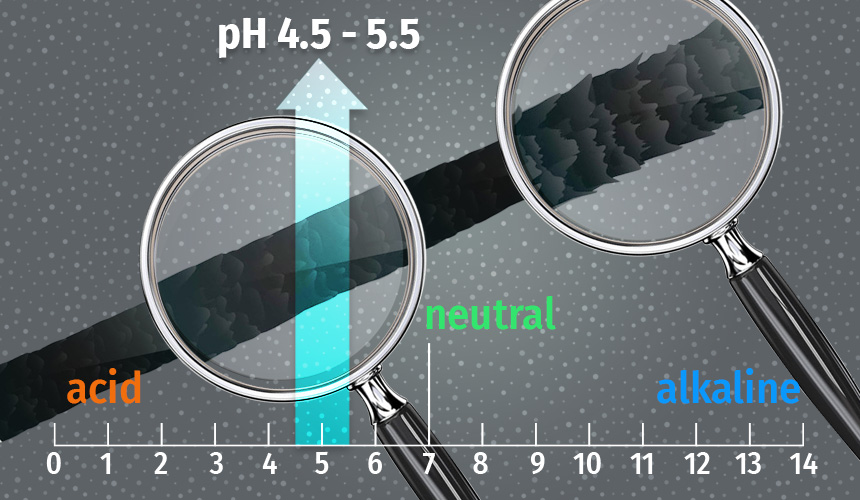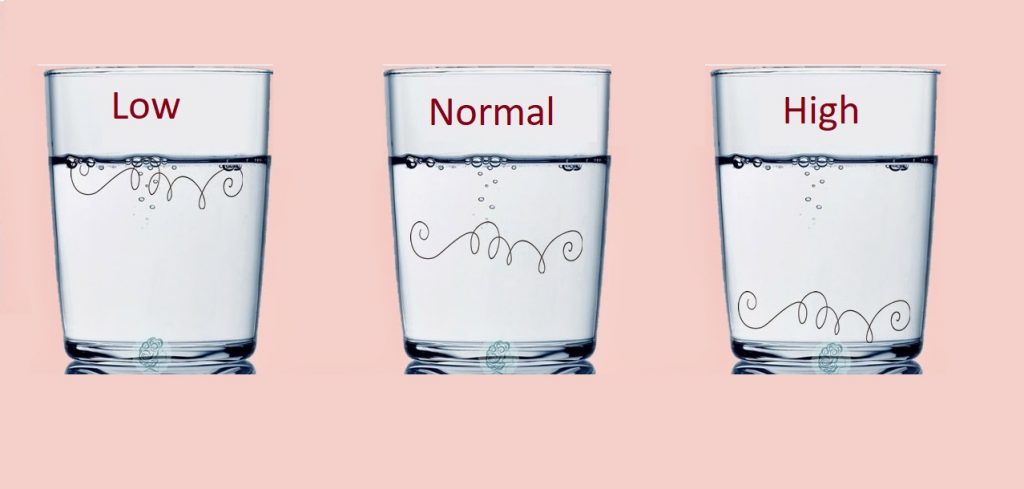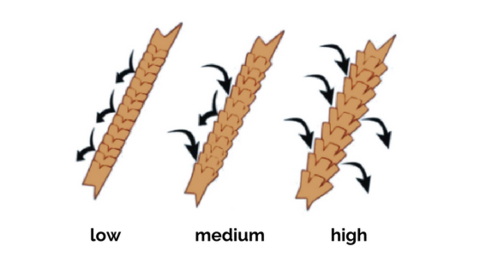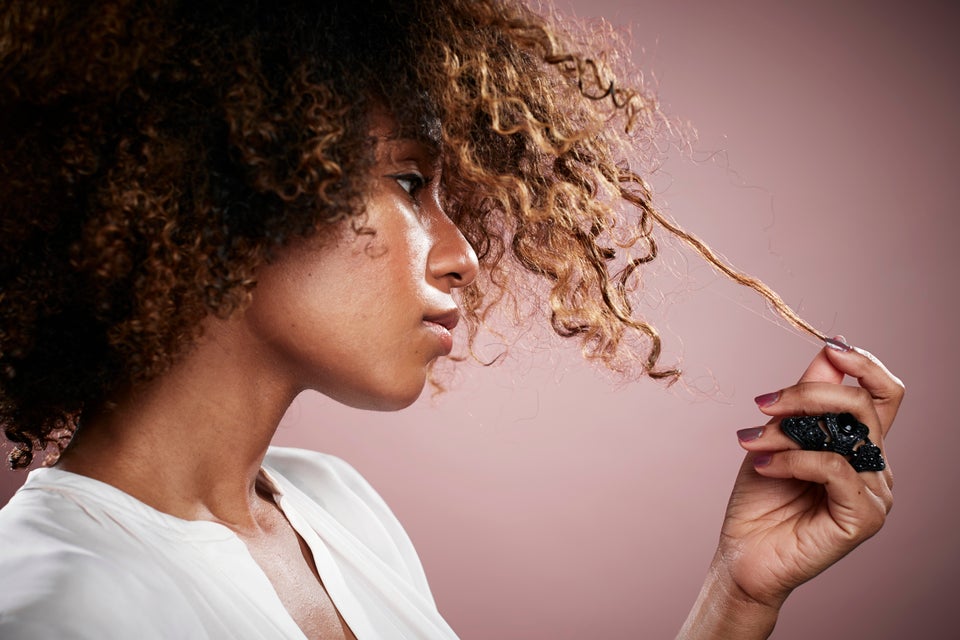2 Accurate Hair Porosity Tests (Float Test + Slip'n Slide Test)
What Is Hair Porosity?
Your hair porosity is an indicative measure of how well your hair is able to absorb and lock in moisture. Understanding your hair porosity is very important because it determines how effective products will work in your hair, thus, empowering you to make a more informed decision when adding products to your regimen.
When selecting products to add into your regimen remember low-pH products such as conditioners and moisturizers reduce your hair’s porosity by constricting your hair cuticle (the outer layer of your hair), causing them to tighten and lock in moisture. On the other hand, higher-pH products such as shampoos have the opposite effect and increase your hair porosity by swelling and lifting your hair cuticle. This is important to note because it shows how your hair’s pH and porosity are closely related.

All hair types are naturally porous and permeable to water, however hair porosity varies from person to person as a result of genetics. The condition and shape of our hair’s cuticle layers impact the porosity of our hair. The porosity of our hair can also shift do to exposure to heat treatment and chemical processing. Below we will discuss ways on how to check your hair porosity and the different porosity types to better help you understand how to manage your hair and improve its overall health and appearance.
How to Check Porosity
First things first, in order to determine what level of porosity your hair is you must test it. This can be done in two simple ways:
-
Float Test

- Slip’n Slide Test

Please note that in order to get the most accurate results from these tests they must be conducted on freshly cleaned and dry hair.
Float Test
Take a piece of your clean dried hair, and drop it in a cup of water. Let it sit in the cup for 3-5 minutes and watch if your hair sinks or floats. If it floats you have low porosity, if it sinks it has high porosity. If it sinks very slowly you have medium porosity.
Slip’n Slide Test
Grab a strand of your clean dried hair with one hand and slide your fingers towards your scalp with the other. If you feel some slight bumps it means your hair cuticles are lifted and your hair may possess high porosity. If it's smooth, then your cuticle may be bound tight, showing that you may possess low porosity.

Porosity Types & How to Treat each type
Low Porosity
People of African descent naturally tend to have low porosity hair. Low porosity hair has a tightly bound cuticle layer, making it extremely difficult for moisture to penetrate and difficult for moisture to leave once it has entered. Possessing low porosity hair makes your hair more prone to product buildup.
Thus, in order to effectively condition your low porous hair you may consider adding heat to your conditioning treatments by using a hot towel after applying your conditioner. Your conditioner and moisturizer should contain humectants so that your hair can easily draw in moisture from your environment. Please keep in mind that low porosity hair is not only resistant to moisture but it is also protein sensitive which means it can easily build up on protein. Too much protein can leave your hair feeling very stiff and brittle which can lead to breakage.
Also, start to look into liquid products that contain hair milk for it has a lighter feel and wont leave your hair feeling oily.
Low porosity hair can be turned into high porosity by the application of chemical treatments such as hair coloring, bleaching, or relaxing; or the over use of heat treatments such as using a flat iron. So keep this in mind the next time you are considering to apply these treatments to your hair.
A great conditioner and moisturizer that works great with low porosity hair is Caribbean Secrets Cosmetics Crème and Caribbean Secrets Cosmetics Moisturizing Mist (both coming soon..)


High Porosity
High porosity hair contains a very loose cuticle allowing moisture to easily penetrate when wet but loses even more as it dries. High porosity hair is caused by anything that alters your hair cuticle such as enduring excessive abuse from heat, chemical treatments, and harsh shampoos that contain sulfate. If you have high porosity hair you must take extra precaution with what your hair is exposed to since it is highly susceptible to damage. Even too much exposure to the sun can cause damage to high porosity hair. Stay away from products that are heavy in humectants because your hair may become very frizzy in humid weather. Also avoid using clarifying shampoos that are heavy in sulfates. If you are a swimmer use pre shampoo treatments that contain polar oils such as Pure Unrefined Haitian Castor Oil or Coconut oil to protect your hair from the harmful effects of the chlorine. Using bi-weekly deep conditioning treatments is highly recommended. Also consider using hair butters to adequately seal in moisture to your hair.
Medium porosity
If you have medium porosity you are in luck because it requires very low maintenance. The hair cuticle is slightly looser than low porous hair but not as loose as high porous hair. With medium porosity hair allowing the right amount of moisture and protein into your curls makes it easier to style and maintain your hair the way you want without your hair giving you too much hassle. Deep conditioning with products that contain protein is recommended for medium porosity but if you notice that your hair has become harder and more rigid you may need to alter by using a more moisturizing, less protein heavy product regimen.
Last Tip
All in all please keep in mind that everyone’s hair is different. So please avoid comparing yourself to people who do not have the same hair type or porosity as you. This could be discouraging and harmful to your hair journey. Its all about trial and error. Use these tips as a guideline to help you reach your hair goals.

Peace
